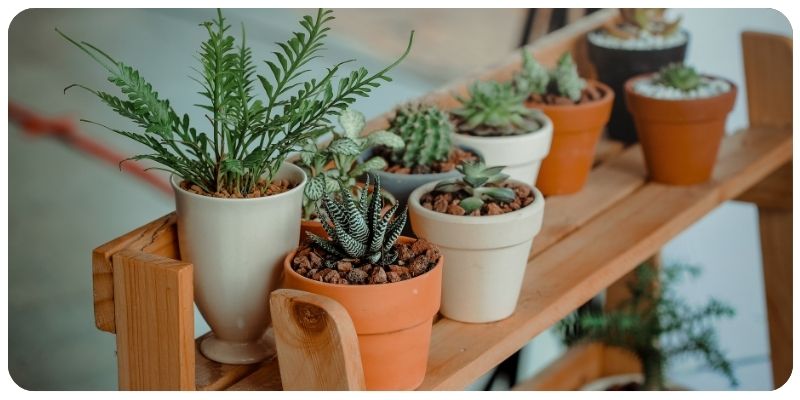
The Ultimate Guide to Choosing the Right Pot for Your Indoor Plants
Choosing the right pot for your indoor plants is more than just about aesthetics. The pot you select plays a crucial role in the health and growth of your plants. With so many different types, materials, and styles of pots available, it can be overwhelming to choose the best one for your indoor garden. In this ultimate guide, we will help you understand the different factors to consider when selecting pots for your indoor plants.
1. Why Choosing the Right Pot Matters
The pot you choose directly affects the plant's health, root development, and overall growth. A well-chosen pot provides proper drainage, root space, and aeration, which are essential for a thriving plant. On the other hand, the wrong pot can lead to issues like root rot, stunted growth, or even the death of the plant.
2. Types of Pots for Indoor Plants
There are several types of pots available for indoor plants, each with its own set of benefits and considerations. Understanding the options can help you choose the best fit for your plants and décor.
Ceramic Pots
Ceramic pots are one of the most popular choices for indoor plants. They come in a variety of colors, patterns, and finishes, making them highly decorative. Ceramic pots can be glazed or unglazed:
- Glazed Ceramic: Glazed pots have a smooth, shiny finish that helps retain moisture. They are great for plants that prefer consistent moisture levels.
- Unglazed Ceramic (Terracotta): Terracotta pots are porous, allowing air and moisture to pass through the walls. They are ideal for plants that prefer drier conditions, such as succulents.
Plastic Pots
Plastic pots are lightweight, affordable, and come in a wide range of colors and sizes. They are a good option for beginners and for plants that need to be moved around frequently. However, they may not offer the best drainage, so it's important to ensure proper care when using plastic pots.
Metal Pots
Metal pots provide a sleek and modern look to your indoor garden. However, they can heat up quickly in direct sunlight, which may affect the plant’s roots. Metal pots are often used as decorative outer pots, with the plant placed in a plastic or ceramic pot inside to provide better insulation and drainage.
Wooden Pots
Wooden pots are ideal for adding a rustic or natural look to your home. They are sturdy and offer excellent insulation, keeping the plant's roots protected from extreme temperatures. However, wooden pots can rot over time, especially if exposed to excessive moisture. Line them with plastic to prevent water damage.
Hanging Pots
Hanging pots are perfect for trailing plants like pothos or spider plants. These pots save space and create visual interest by elevating plants off the ground. Hanging pots can be made from various materials, including plastic, metal, or woven fibers, each offering different benefits in terms of weight and durability.
3. Pot Drainage: Why It’s Important
Drainage is one of the most important factors to consider when choosing a pot. Without proper drainage, excess water can accumulate in the pot, leading to root rot and other moisture-related issues. Here’s what you need to know about pot drainage:
- Drainage Holes: Always choose a pot with drainage holes at the bottom to allow excess water to escape. If you fall in love with a pot that doesn’t have drainage holes, you can drill holes yourself or use it as a decorative outer pot.
- Inner Pot System: For pots without drainage holes, consider placing a smaller pot with drainage holes inside the larger decorative pot. This allows you to water your plants while still ensuring proper drainage.
- Use Pebbles or Stones: Placing a layer of pebbles or stones at the bottom of the pot can improve drainage by allowing water to move freely out of the soil.
4. Choosing the Right Size Pot
The size of the pot is crucial for the growth and health of your indoor plants. A pot that’s too small can restrict root growth, while a pot that’s too large can cause the soil to hold excess moisture. Here are some tips for selecting the right size:
- Repotting: When repotting a plant, choose a pot that is about 1-2 inches larger in diameter than the current pot. This gives the roots room to grow without overwhelming them with too much soil.
- Shallow vs. Deep Pots: Different plants have different root structures. Shallow-rooted plants like succulents and cacti thrive in shallower pots, while deep-rooted plants like trees and large shrubs need deeper containers.
5. Aesthetic Considerations
While functionality is key, the aesthetic appeal of your pots should also complement your home’s décor. Whether you prefer modern minimalism or rustic charm, there’s a pot to match every style. Here are some things to consider:
- Color and Texture: Choose pots that complement your plants' colors and textures. For example, a sleek white pot can enhance the vibrant green of a snake plant, while a rustic terracotta pot may bring out the beauty of succulents.
- Shape: Pots come in various shapes, including round, square, and rectangular. Choose a shape that not only fits the space but also complements the plant's growth habits.
- Materials and Style: The material of the pot can add to the overall style of your space. For a bohemian vibe, opt for woven baskets or hanging planters, while ceramic pots offer a more classic, timeless look.
Conclusion
Choosing the right pot for your indoor plants is essential for both the plant's health and the aesthetic of your home. By considering factors like drainage, material, size, and style, you can find the perfect pot to suit your plants' needs and your interior design. Remember, a healthy plant is a happy plant, and the right pot can make all the difference.